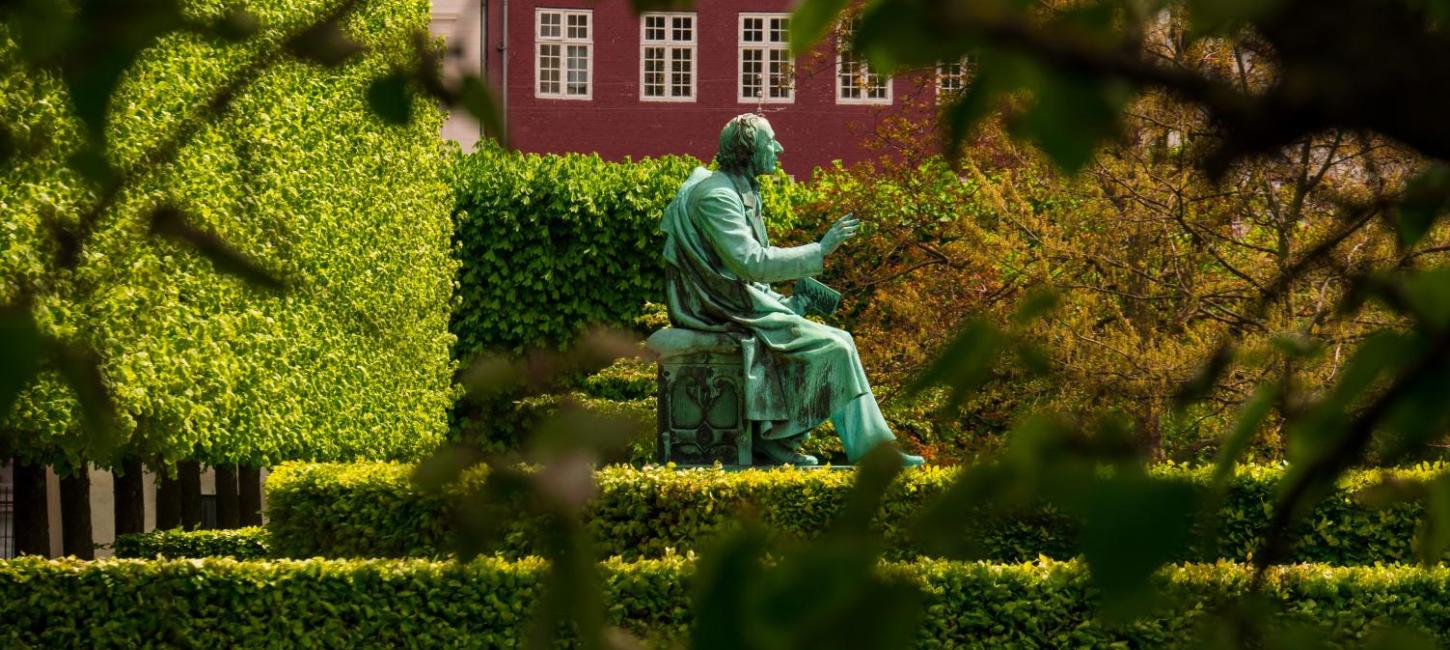
Hans Christian Andersen and Copenhagen - the Rise of a Poet
In 1819, a young boy with an extraordinary imagination arrives all by himself to Copenhagen - the only place to be in Denmark at the time, if to succeed within theatre, art, opera, and culture. And that was indeed the young boy’s aim - to do well. His name was Hans Christian Andersen.
About Hans Christian Andersen's life in Copenhagen
By Maria Junghans
Storyteller and creator of stories with a passion for the life and work of H. C. Andersen.
When Hans Christian Andersen was only a 14-year-old boy he arrived in a capital city very different from todays. Copenhagen was surrounded by city walls and protected by a citadel and was home to the country’s only university, the Royal Theatre as well as the home of the Royal Family. A busy harbour town where the geographical distance between rich and poor was short but socially almost insurmountable. Hans Christian Andersen had zero acquaintances in Copenhagen and arrived with only 13 rigsdalers (The Danish currency at the time) in his pocket, which he all spent on food and longing the first night.
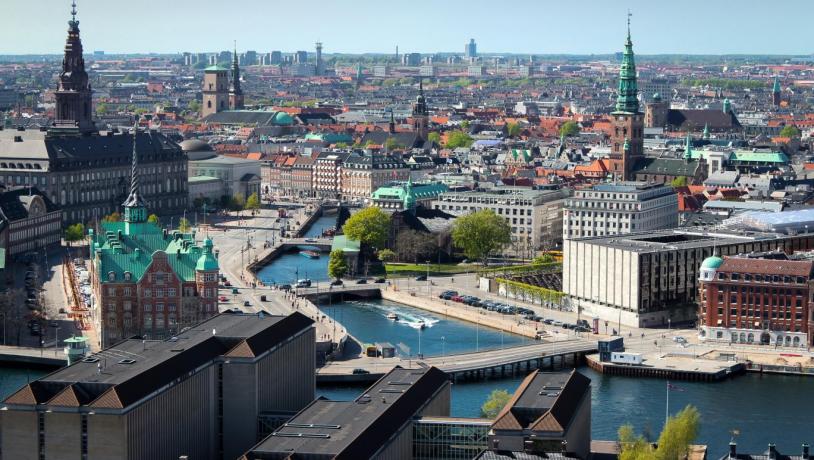
Foto:Thomas Rousing
The next morning, he counted his money and felt a chill go down his spine. He could not afford to pay one more night at the inn. As he walked through the city to the Royal Theatre on Kongens Nytorv near Nyhavn, he may have thought, “There is only one thing to do, and that is to take action”. Plan A - he signed up to audition at the Royal Theatre in an attempt to make his biggest dream come true: to become an actor at the Royal Theatre. “You are too thin to be an actor at this theatre,” the director said. Then he went on to plan B and tried his luck at the ballet, but his dance moves were all his invention and had never been seen before. “You are most surely mad,” the leading ballerina said, and so two doors were closed straight in his face.
After crying for a while, he set plan C into action. He went to visit the leader of the Royal Opera Mr Siboni, who lived in Vingårdsstræde number 6, just behind Magasin du Nord. Now it is a car park, but back then it was a beautiful house. That evening Siboni held a dinner party where many important Danish composers and artists were gathered. Andersen was welcomed in, sang, and by the end of the evening, the party had collected enough money for Andersen to live in Copenhagen for half a year. Siboni gave him a position at the Royal Opera Choir as well as singing lessons. But this kind of good fortune only lasted for half a year. By the age of 14 and a half, his voice changed and Siboni, unfortunately, had to discharge him.
Plan D - now there was only one opportunity for him if he wanted to stay connected to the Royal Theatre, and that was to write plays for the scene. His orthography was poor, to say the least, and his knowledge and general education were behind in so many different aspects that his play was rejected, but once more his determination and willpower drove him to find a solution. Though his first plays were rejected, the director of the Royal Theatre, Jonas Collin, saw a real, though unpolished, talent in the boy. It was Jonas Collin who made sure Andersen got a scholarship to study and get the education he never had access to as a child.

Foto:Det Kongelige Teater
Jonas Collin was an important man at the time and lived in the exclusive part of Copenhagen called Frederikstaden, on Bredgade close to Kongens Nytorv. The house no longer exists, but it became a second home to Andersen. The home of the Collin’s was a place where he could get advice, a meal, and feel as if he was a part of a family. The son Edward Collin became particularly important to Andersen, as he would later become his editor and inspire one of the best fairytales for adults that Andersen wrote. Andersen continued to write plays for the theatre, as well as poems, novels, and songs and later, what would make him immortal, fairytales.
He started his life in Copenhagen alone, living in the smallest attic rooms in town and ended up famous and rich in the most luxurious suites of Hotel d’Angleterre with enough friends and connections to dine out six days a week.
Facts about Hans Christian Andersen
- He was born on 2 April 1805 in Odense as the only child of shoemaker Hans Andersen and Anne Marie Andersdatter.
- He died at the age of 70 on 4 August 1875 at the mansion Rolighed located in the outskirts of Copenhagen.
- He was never married.
- He had no children.
- At the age of 14, he arrived in Copenhagen on the 6th of September 1819.
- He worked as a singer at the Royal Opera Choir and as an extra in different plays at the Royal Theatre until he was dismissed in 1822.
- He got a royal scholarship to study for the graduation exam in 1822.
- He published his first book in 1822 under the pseudonym: William Christian Walter. William from William Shakespeare, Christian from his own name and Walter, from Sir Walter Scott. His ambitions were set high.
- He published his first book of poems in 1829.
- He published his first novel “The improvisatore” in 1835.
- His first book of fairytales was published in 1835.
- He wrote 212 fairytales in total. Approximately 156 of them were published during his lifetime.
- His work is translated into 160 different languages.
- He died as a rich man, leaving all his wealth to Edward Collin.
- He was buried at Assistens Cemetery in the heart of Nørrebro in Copenhagen.
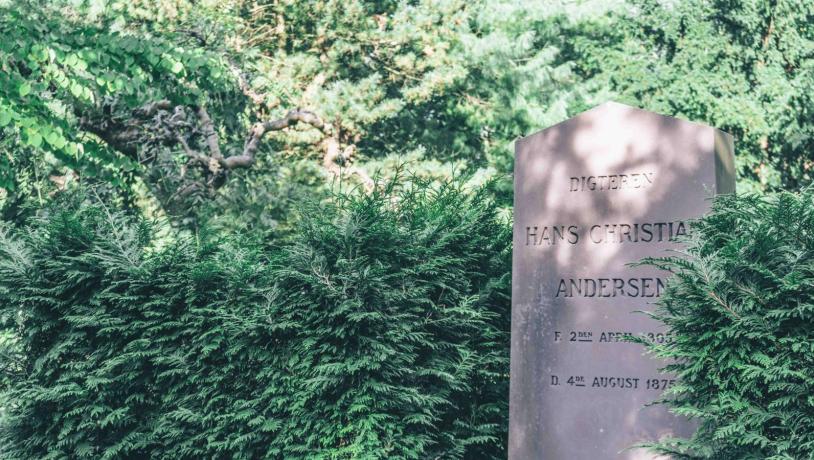
Foto:Sebastian Himmelstrup
Places with a story connected to Hans Christian Andersen in Copenhagen
Magasin du Nord
Kongens Nytorv 13, City centre, Copenhagen K - Website
His penthouse apartment fits the idea of the poor artist’s humble abode perfectly. It is situated on the 3rd floor of Magasin du Nord, and it was here that Andersen wrote some of his first plays that were accepted at the Royal Theatre. It is also in this room that he gets the inspiration for the Goblin and the Grocer, in which Andersen poses the question if we humans dare to imagine the world in a different way.
Hotel d’Angleterre
Kongens Nytorv 34, City centre, Copenhagen K - Website / Press photos
From 1860 Andersen stayed at Hotel d’Angleterre when he arrived home from his many travels aboard. He stayed in different rooms for shorter periods of time, until he found something more permanent. The celebration of the 50th anniversary of his arrival to Copenhagen started here with his suite being decorated with flowers.
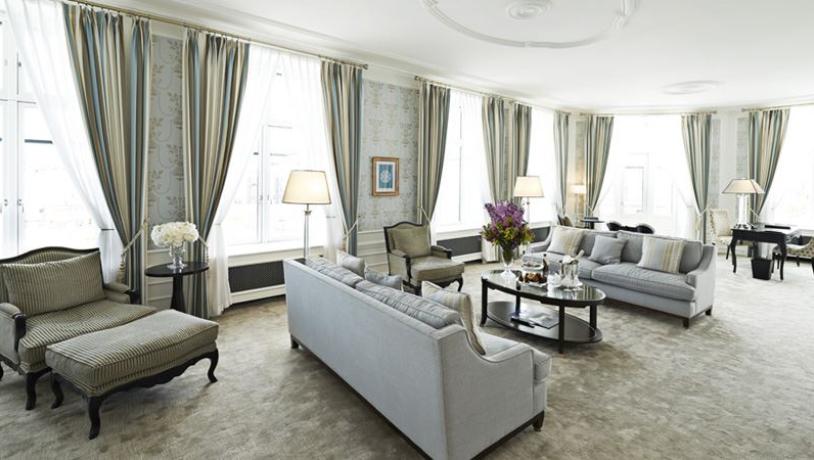
Foto:d’Angleterre
Nyhavn
Nyhavn 1-71, City centre, Copenhagen K - Website / Press photos
Nyhavn is as close to a home as it gets for Andersen, who moved and travelled frequently and never owned a home of his own. One of the places he lived in for the longest time (in total) is Nyhavn 67. He preferred to live either on the ground or first floor and to have two rooms on the sunny side of the street. Paramount to his demands for lodging was that it had to be close to the Royal Theatre.
Madame Vincent’s lokaler
Kongens Nytorv 5, City centre, Copenhagen K
Later the party moved to the other side of the square, where the great celebration of the 50th anniversary of Andersen’s arrival to Copenhagen took place in the evening. Many songs, speeches, and presents were given. More than 200 guests were invited, whom among them was the King.
Amalienborg
Amalienborg Slotsplads 5, City centre, Copenhagen K - Website / Press photos
Andersen stayed here on one occasion as he came back from school holidays. He had befriended the Wulff family, who lived at the Brockdorffske Palæ, and they took him in for one of the holidays. Lady Wulff looked out for him like a mother, and Andersen became close friends with their son and daughter. It was thus through this friendship he became connected to the Royal Family. Like Aladdin, Andersen rose from poverty as he now looked down at the town square from the splendour of the palace as a guest rather than as a servant.
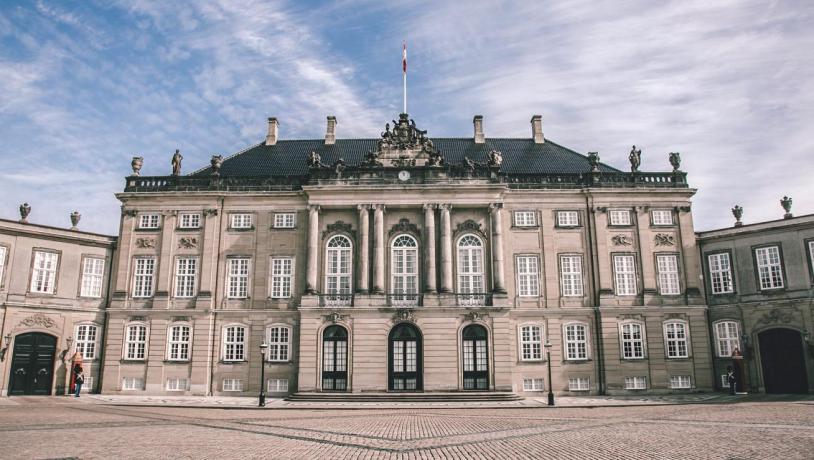
Foto:Thomas Høyrup Christensen
The Royal Theatre
August Bournonvilles Passage 2-8, City centre, Copenhagen K - Website / Press photos
From his early childhood, Andersen had been in love with the theatre. He did also appear on the stage as an extra a few times and worked in the opera choir before he started to write plays for the stage. He often wrote lyrics for operas of important Danish composers. From his first evening in Copenhagen to the end of his life, he always lived within walking distance to the Royal Theatre, where he went almost every evening to see a play. It is also here in front of the Royal Theatre that Andersen said goodbye forever to the first woman he loved, and who loved him back, Riborg Voigt. A love story that might have been the inspiration for the story of The Little Mermaid and The Chimney Sweeper & the Shepherdess.
Regensen
Store Kannikestræde 2, City centre, Copenhagen K - Website
Regensen is the second oldest college in the country, where Andersen met and partied with other students at the university, and got the inspiration for his novel O.T. Andersen was part of the cultural scene of Copenhagen, and he would hang out at the Regensen College discussing philosophy with Søren Kierkegaard, and most passionately taking in all the discoveries from the world of science. One example you will find in The Snow Queen where little Kay shows Gerda the beauty and symmetry of snowflakes through a magnifying glass, or Andersen's story "In a Thousand Years", where he predicts aeroplanes and telephones.
Vor Frue Kirke
Nørregade 8, City centre, Copenhagen K - Website / Press photos
Vor Frue Kirke was the church from which Andersen was buried on 11 August 1875. The King and the Crown Prince attended the ceremony among many other important and common people who wanted to pay the national poet their last respect. It was a state funeral and in the church, you can see the work of Andersen’s close friend, the sculptor Thorvaldsen.
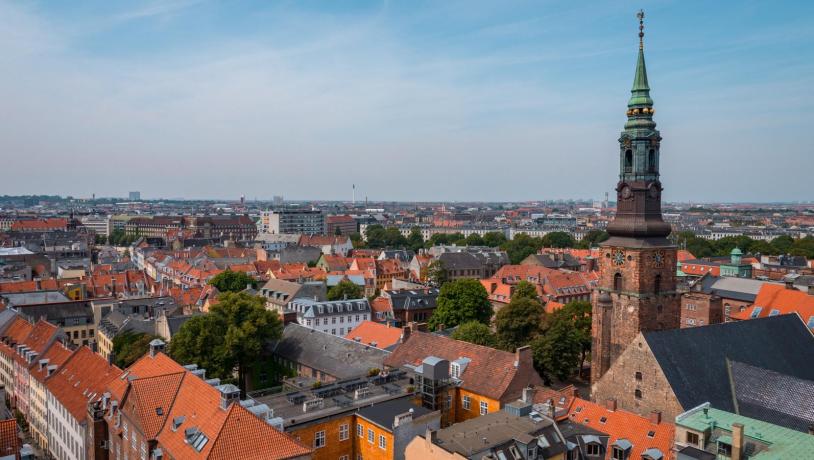
Foto:Daniel Rasmussen
Thorvaldsen Museum
Bertel Thorvaldsens Plads 2, City centre, Copenhagen K - Website / Press photos
The museum was built while Andersen and Thorvaldsen were both alive. The two artists had a close friendship and had a mutual respect that made it possible, to be honest with one another in the critique of their work. Thorvaldsen was the first to realise the importance of Andersen’s fairytales as he said: “They will make you immortal”.
Tivoli
Vesterbrogade 3, City centre - Copenhagen K - Website / Press photos
This place of beauty and wonder gave inspiration to Andersen’s tale about the Little Nightingale. He never travelled to China, but the décor of the gardens, the colourful lights and the many artificial beauties inspired the poet to write the fairytale of the little grey bird who surpassed any artificial device.

Foto:Visit Copenhagen
Frederiksberg Gardens
Frederiksberg Runddel 1A, Frederiksberg - Website / Press photos
The Gardens of Frederiksberg was where Andersen first found himself after he arrived in Copenhagen. Nature and the connection with nature was always an important part of Andersen’s world. Once in Springtime, he came to the gardens and was overwhelmed by the beauty of the trees and life. He was so happy that he hugged an old beech tree and was deemed mad by the park officer.
Bakkehus Museum
Rahbeks Alle 23, Frederiksberg - Website / Press photos
The museum used to be the home of the Rahbek family. A family of great importance in the cultural scene of Copenhagen. This is one of the places where the young and very lonely Hans Christian first found friends and support. Ms Rahbek was the first to call Andersen a poet.
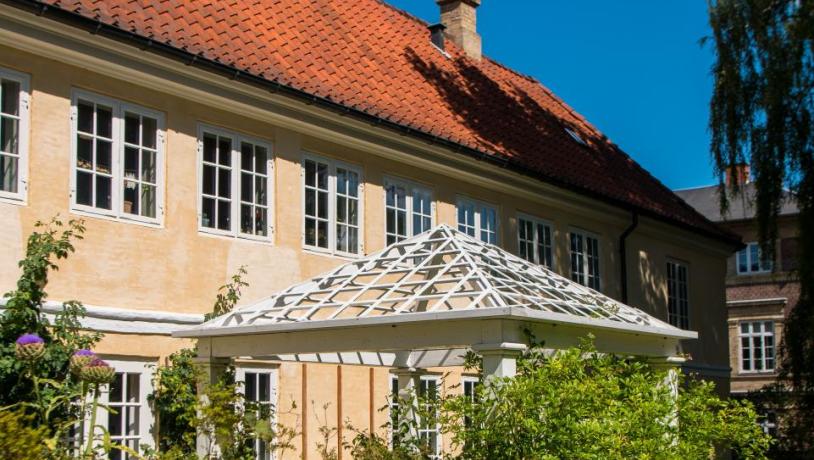
Foto:Daniel Rasmussen
Assistens Cemetery
Kapelvej 2, Nørrebro, Copenhagen N - Website / Press photos
Today, when you visit Andersen’s grave at Assistens Cemetery, you will find that Edward Collin and his wife are buried next to Andersen. Seen from Andersen’s point of view, Edward was his best friend. However, the friendship between them was never even. Edward always kept Andersen at a distance, refusing Andersen's request that they address each other informally, by saying “I may address you informally, but you still have to address me formally”. Their relationship inspired Andersen to write one of his best stories for adults, “The Shadow”. Even if Edward always kept a distance from Andersen, he still had enough compassion with him that he chose to share the same burial place, knowing that Andersen preferred to be in good company even after his death.
Statues of Hans Christian Andersen in Copenhagen
Have you always wondered what the famous writer and poet looked like? In Copenhagen, you have the chance to “meet” Hans Christian Andersen at two different locations.
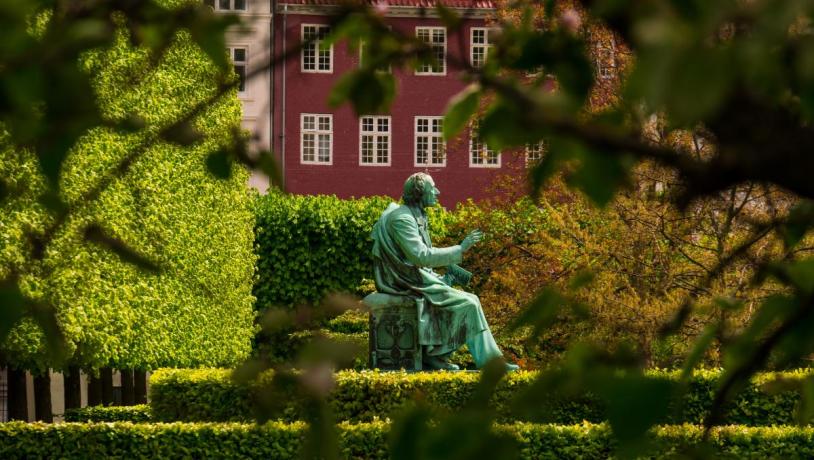
Foto:Daniel Rasmussen
City Hall Square
Rådhuspladsen, 1550 Copenhagen V
At the City Hall Square, by the H.C. Andersen Boulevard, you will find a statue of Hans Christian Andersen sitting with a book. The bronze statue was made by Henry Luckow-Nielsen and was erected in 1965.
King’s Garden
Kongens Have, Sølvgade, 1050 Copenhagen K
In the King’s Garden, Hans Christian Andersen is also found with a book in his hand. On the plinth are reliefs in bronze with illustrations from the poet's fairy tales “The Ugly Duckling” and “The Storks”. This statue was erected on the occasion of the poet's 70th birthday, April 2, 1875. However, it was not until 1880 that August Saabye’s monument could be revealed – and by then, Hans Christian Andersen had unfortunately passed away.
Learn more about the famous Danish writer
A new Hans Christian Andersen's House in Odense on Fyn, designed by star-architect Kengo Kuma, has just opened and is located less than 2 hours’ drive away from Copenhagen.
New H. C. Andersen's House in Odense
Press photos
Hans Christian Andersen in Copenhagen - press photos. The photographers must be credited.
H. C. Andersen in Copenhagen - press photos

Senior Manager – Press & PR
